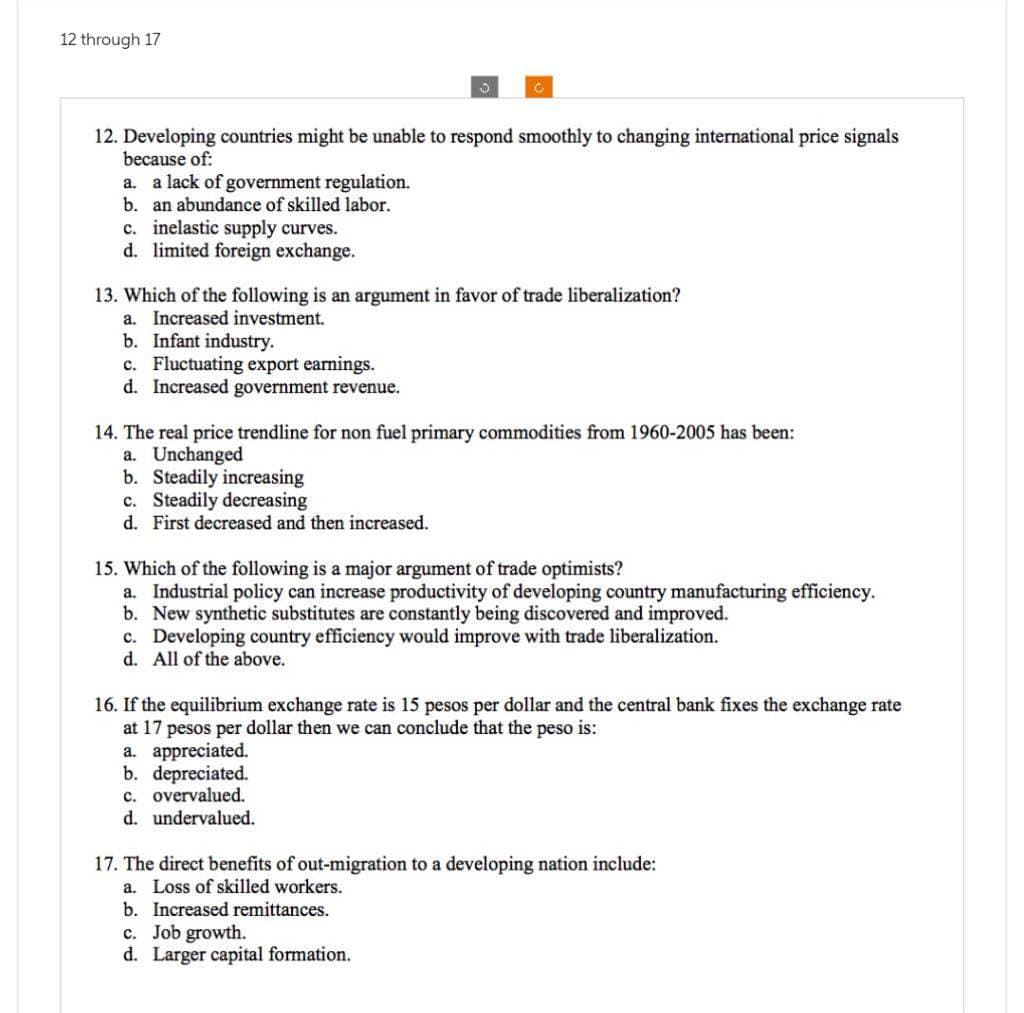12. Developing countries might be unable to respond smoothly to changing international price signals because of: a. a lack of government regulation. b. an abundance of skilled labor. c. inelastic supply curves. d. limited foreign exchange.
12. Developing countries might be unable to respond smoothly to changing international price signals because of: a. a lack of government regulation. b. an abundance of skilled labor. c. inelastic supply curves. d. limited foreign exchange.
Chapter19: Economic Development
Section: Chapter Questions
Problem 3.4P
Related questions
Question

Transcribed Image Text:12 through 17
12. Developing countries might be unable to respond smoothly to changing international price signals
because of:
a. a lack of government regulation.
b. an abundance of skilled labor.
c. inelastic supply curves.
d. limited foreign exchange.
13. Which of the following is an argument in favor of trade liberalization?
a. Increased investment.
b. Infant industry.
c. Fluctuating export earnings.
d. Increased government revenue.
14. The real price trendline for non fuel primary commodities from 1960-2005 has been:
a. Unchanged
b. Steadily increasing
c. Steadily decreasing
d. First decreased and then increased.
15. Which of the following is a major argument of trade optimists?
a. Industrial policy can increase productivity of developing country manufacturing efficiency.
b. New synthetic substitutes are constantly being discovered and improved.
c. Developing country efficiency would improve with trade liberalization.
d. All of the above.
16. If the equilibrium exchange rate is 15 pesos per dollar and the central bank fixes the exchange rate
at 17 pesos per dollar then we can conclude that the peso is:
a. appreciated.
b. depreciated.
c. overvalued.
d. undervalued.
17. The direct benefits of out-migration to a developing nation include:
a. Loss of skilled workers.
b. Increased remittances.
c. Job growth.
d. Larger capital formation.
Expert Solution
This question has been solved!
Explore an expertly crafted, step-by-step solution for a thorough understanding of key concepts.
This is a popular solution!
Trending now
This is a popular solution!
Step by step
Solved in 4 steps

Knowledge Booster
Learn more about
Need a deep-dive on the concept behind this application? Look no further. Learn more about this topic, economics and related others by exploring similar questions and additional content below.Recommended textbooks for you

